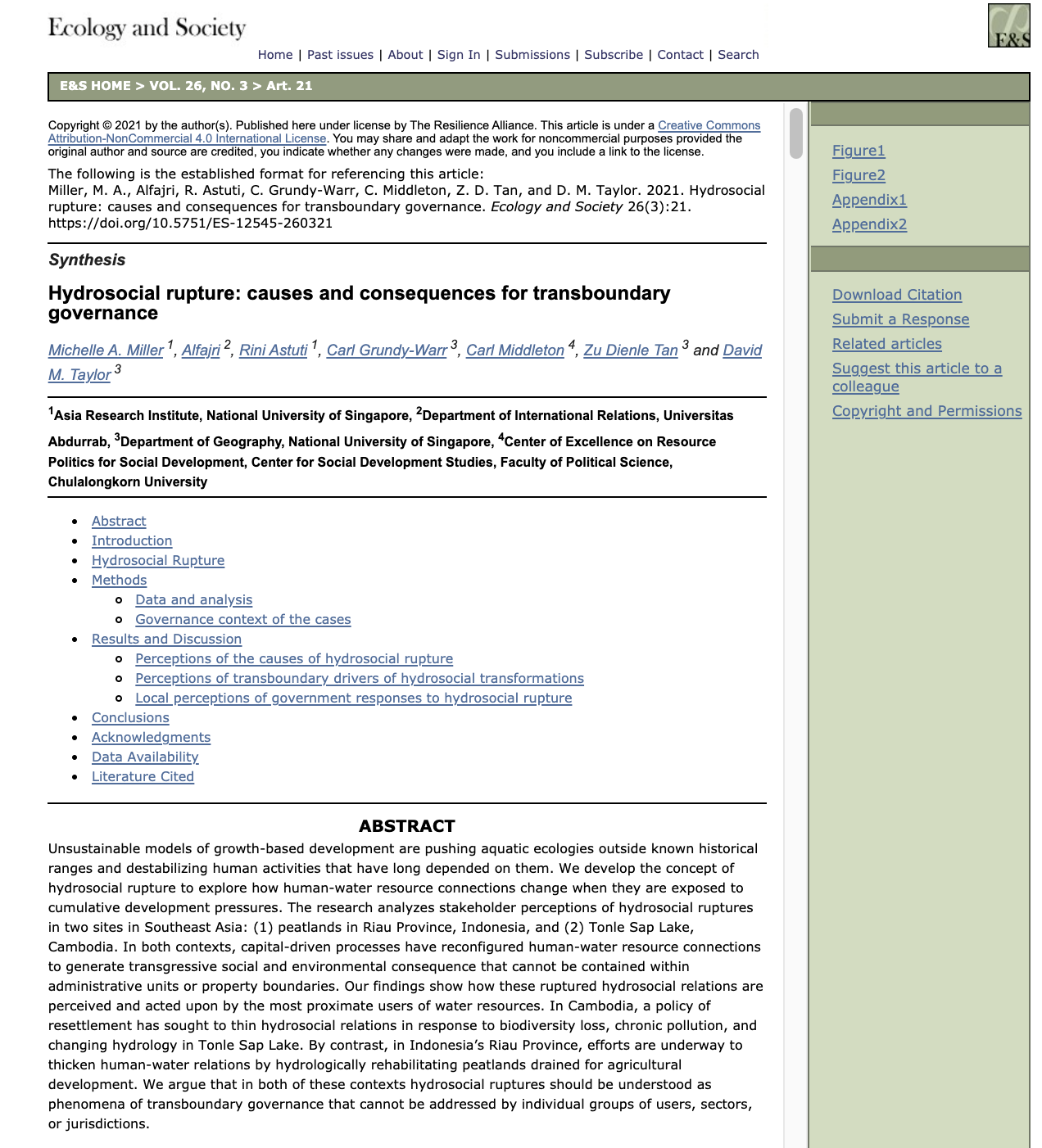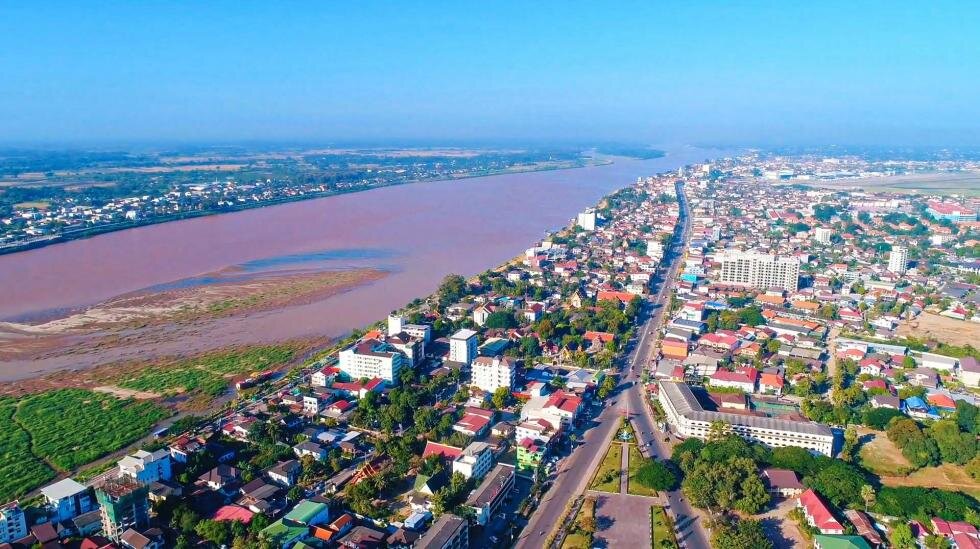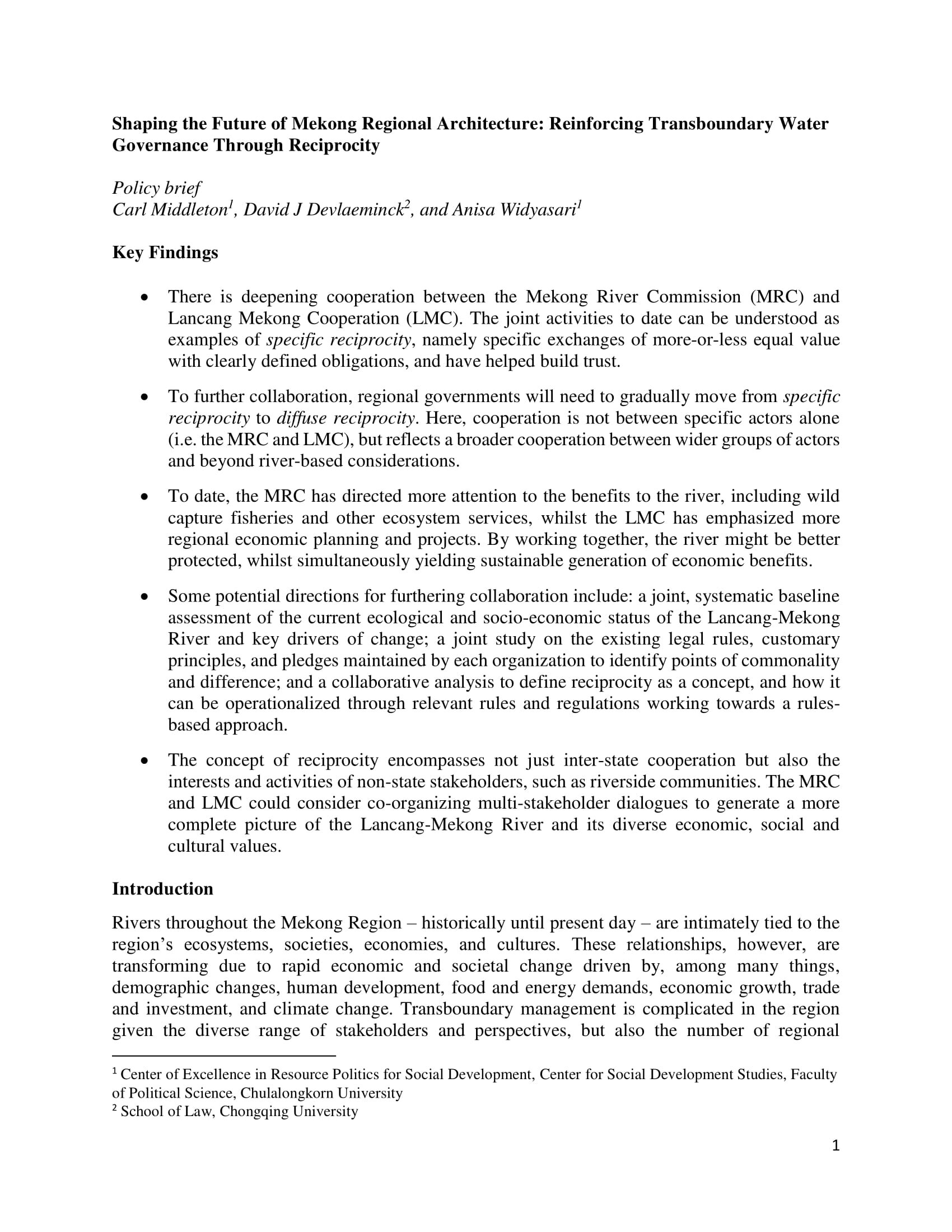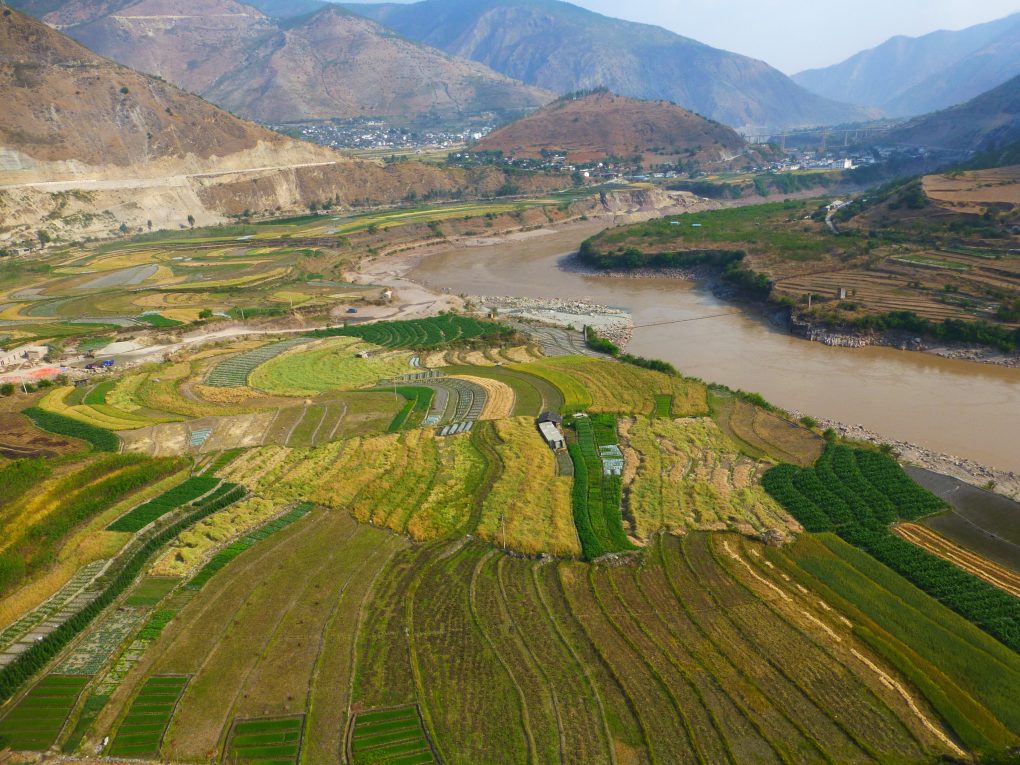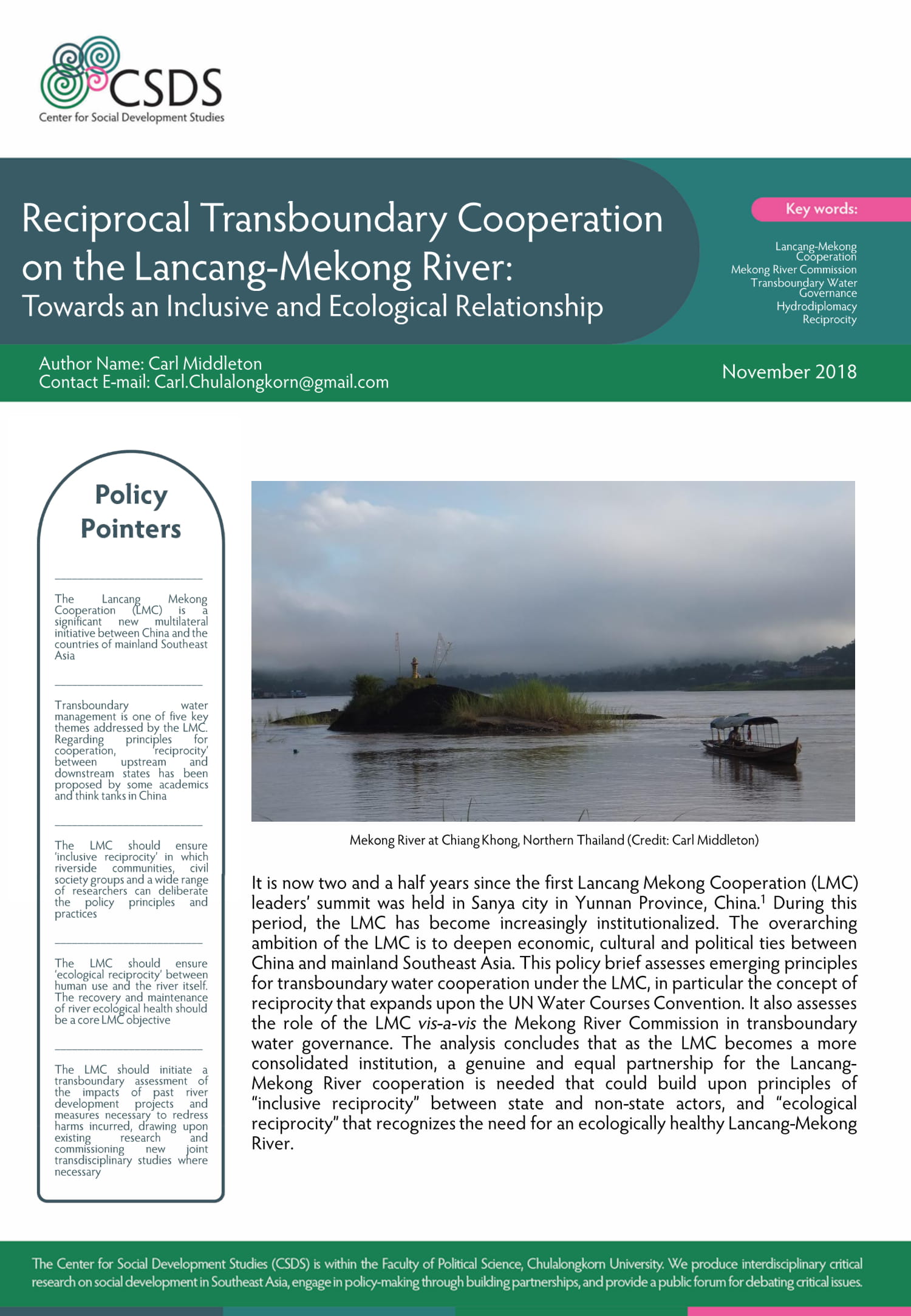In 2019, and again in 2020, the Mekong River – known as the Lancang River in China - has experienced low flows that has caused hardship for millions of people whose livelihoods depend on it.
An intense and often divisive regional debate has ensued about whether low flows are due to drought or the operation of large dams that have been progressively built across the basin since the early 1990s. Particular attention has been paid to the cascade of eleven hydropower dams on the mainstream in China, given the lack of transparency over the projects’ operation and reservoir water storage status.
In April 2020, the research consultancy Eyes on the Earth published a model of the natural (pre-dam) flow of the Lancang River to then predict the impact of the dams downstream in Northern Thailand. Given the absence of actual measurements in the public domain from gauging stations in China, the statistical model used satellite data to create a ‘wetness index’ to estimate the amount of water in the catchment, and then related this to monthly measurements of water levels at the gauging station in Chiang Saen in Northern Thailand. Overall, the study showed how since dams in the Lancang cascade began to be commissioned in the early 1990s there had been a decrease in wet season river levels and an increase in dry season levels, and more irregular and rapid fluctuations in water levels in both wet and dry seasons. These changes became especially pronounced since 2012 when the 5,850 MW Nouzhadu dam began reservoir filling, given that its reservoir is considerably larger than the preceding four projects combined.
While these conclusions have also been reached by previous scientific studies, the Eyes on Earth report gained significant media attention in regional and international outlets, as it was drawn upon by several civil society groups as well as representatives of the US Government to claim that it evidenced that China was responsible for the severity of the 2019-2020 drought and had “turned off the tap” or was “hoarding water”. These statements led in turn to rebuttals from China’s diplomats and researchers.
Such significant claims led to careful scrutiny of the Eyes on Earth report, including by the Mekong River Commission, AMPERES, and academics, that flagged some limitations including that: the report provides results in terms of water level, but this cannot be considered equivalent to water volumes; it didn’t demonstrate that China could store all of the water in the rainy season, hence being capable of fully withholding the river’s flow causing drought in the downstream; and it would have been better if the study had been peer reviewed before publication. Moreover, researchers at AMPERES concluded that the representation of the Eyes on Earth report in the public debate often went beyond its actual findings. In July 2020, researchers from Tsinghua University, a lead research institution in China, added to the debate with a study that argued the region had been experiencing drought. Again, AMPERES reviewing the study found that it too required further clarification and that the study’s conclusions on the benefits of the dam cascade in China to alleviate downstream drought conditions were potentially misleading.
Overall, all existing studies on the impacts of China’s dam cascade on downstream countries are currently based on incomplete data due to a lack of access to already existing data. Moreover, the 2019 and 2020 droughts have occurred at a time of intensified geopolitics between the US and China in Southeast Asia and globally. In September 2020, the Mekong US Partnership was launched that has sought to deepen the relationship between downstream countries and the United States, and that has viewed China’s control of water resources in the upper basin with concern. Yet, the politicization of research – where the limitations of studies are downplayed and the results transformed into simplified narratives – risks undermining the credibility of scientific evidence that could inform processes of transboundary water governance and decision making.
In the Mekong-Lancang basin, transboundary water governance is complex given the diverse range of state and non-state actors’ interests. Two key intergovernmental institutions that structure state-to-state transboundary water governance are the Mekong River Commission (MRC) and the Lancang-Mekong Cooperation (LMC). The MRC is a treaty-based organization founded in 1995 between Cambodia, Laos, Thailand and Vietnam, with China and Myanmar as dialogue partners. The LMC was launched in March 2016 and includes all six states of the Mekong-Lancang basin, with a key role of China as co-chair and financier, and with water resources management as one of five priority areas. The MRC and LMC simultaneously cooperate and contest over their mandate, role and influence in the Mekong- Lancang River basin. Regarding the causes of the 2019 low flows and drought, in December 2019 the LMC and MRC committed to a joint study although the status of this study is not publicly announced.
Over the past couple of years, longstanding calls from downstream states, civil society and communities towards China for water data sharing have intensified. Since 1996, China had only shared rainy season data (from June to October), and occasionally dry season data at times ‘of emergency’ that according to the academic Stuart Biba was an ad hoc measure to deescalate criticism. Moreover, released data was not complete enough to conclusively determine the role that upstream dams had played in low river flows. In the context of the intense criticism during 2020 discussed above, on 22 October 2020 the MRC announced that China had agreed to share all-year around data twice per day for rainfall and river level from two monitoring stations at Manwan and Jinghong.
The new arrangement for state-to-state water data sharing is an important breakthrough, including given that China has deepened its cooperation with the MRC to share data rather than insist on sharing data via the LMC. However, in terms of water data sharing there is more to be done to understand the situation upstream in China. In particular, the number of monitoring stations could be expanded to cover all eleven hydropower dams now in operation and to include data on upstream and downstream water levels and flows for each dam’s reservoir as well as its operation schedule. It could also include tributary river water data, which is already extensively collected, while sharing historical data sets could help establish previous conditions in the basin.
Yet, it is important to recognize that there are numerous other data gaps that need to be addressed in the lower basin. For example, more complete water data on the operation of tributary projects is needed that influence flood and drought conditions both locally and cumulatively throughout the entire basin. This includes not only hydropower dams, but also a growing number of large irrigation schemes. The public release of data on the impact of mitigation measures at the recently completed Xayaburi Dam on the river’s mainstream in Northern Laos is also needed, including on migratory fish and sediment transportation. A project has been initiated within the MRC since late 2019 to study these impacts, while the company also certainly collects data, although results are not yet publicly available. These studies are urgently needed in the context of – and before - plans for further mainstream projects, four of which are currently being actively proposed. These studies could also help explain other unusual river changes recently observed given that first in November 2019, and several times since, the Mekong River has turned aqua-marine blue in areas of Laos and Thailand where usually it is a muddy brown. The MRC has stated that the color change is due to the drop in sediment load and subsequent algae growth due to low river flows. It is certainly possible that low river flows and sediment changes connect to the dams recently constructed.
On 13 November this year, the MRC announced its revamped website and ‘data portal’, with the stated goal of “promot[ing] transparency and increase[ing] access to Mekong related information and knowledge.” According to the MRC’s press release the data portal contains more than 1,000 publications by the MRC, and more than 10,000 datasets on current and historical hydrometeorological and climate time-series data, spatial maps, atlases, photographs, and sector datasets. The availability of this data will be a valuable resource for researchers. The MRC too in its underpinning strategy for the data portal emphasizes the importance of raw data and its analysis through modeling and forecasting.
Yet, there is a crucial final step to make, which is connecting more comprehensive water data availability that can increase transparency to improved transboundary water governance that is participatory and accountable to riparian communities, civil society and the wider public. This applies in the lower basin, for example within the ongoing consultations on proposed mainstream dams, and also in relation to China’s announcement to increase data sharing that is not yet explicitly connected to a commitment to improved accountability of the Lancang hydropower cascade to downstream countries and riverside communities.
It is important to recognize that the type of scientific knowledge generated by the MRC and scientific researchers is only one form of knowledge necessary for inclusive and sustainable development. Situated community-knowledge such as ‘Thai Bann’ research, civil society-led research, as well as political and practical forms of knowledge, all matter for knowledge to be “actionable”. The recent growth in “co-produced knowledge” or “transdisciplinary research” reflects acknowledges this recognition of the earlier disconnect between scientific knowledge and its impact on improved environmental governance. It calls for greater recognition of the legitimacy, value, strengths and limitations of a broader range of knowledge production, and for its mutual accountability. In the context of the transboundary Mekong-Lancang River, it is also important that those producing diverse knowledge are networked, communicating and deliberating across borders.
Founded on knowledge sharing and co-creation, there is a need for a clear and institutionalized rules-based regime for the entire Lancang-Mekong basin that is based on meaningful dialogue, reciprocity and trust both between states and with communities and civil society. The UN Watercourses Convention outlines good principles and practices for this, including on how to manage knowledge complexity and related uncertainty drawing on the “do no harm” and “precautionary” principles. Focusing on establishing a rules-based approach at the national and transboundary scale is a vital mechanism through which accountability can occur, and also within which alternative visions for the Mekong-Lancang basin can be explored and seriously considered.
———
*Director, Center of Excellence in Resource Politics for Social Development, Center for Social Development Studies, Faculty of Political Science, Chulalongkorn University. Email: Carl.Chulalongkorn@gmail.com
This article was originally published on the Heinrich-Böll-Stiftung Southeast Asia website on 27 November 2020 at this link.


